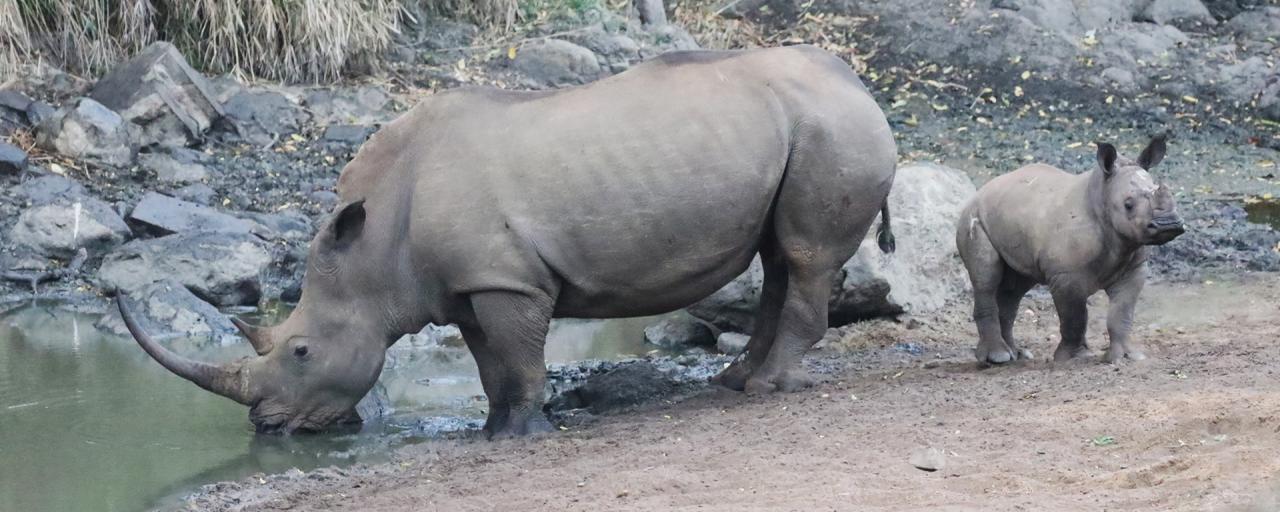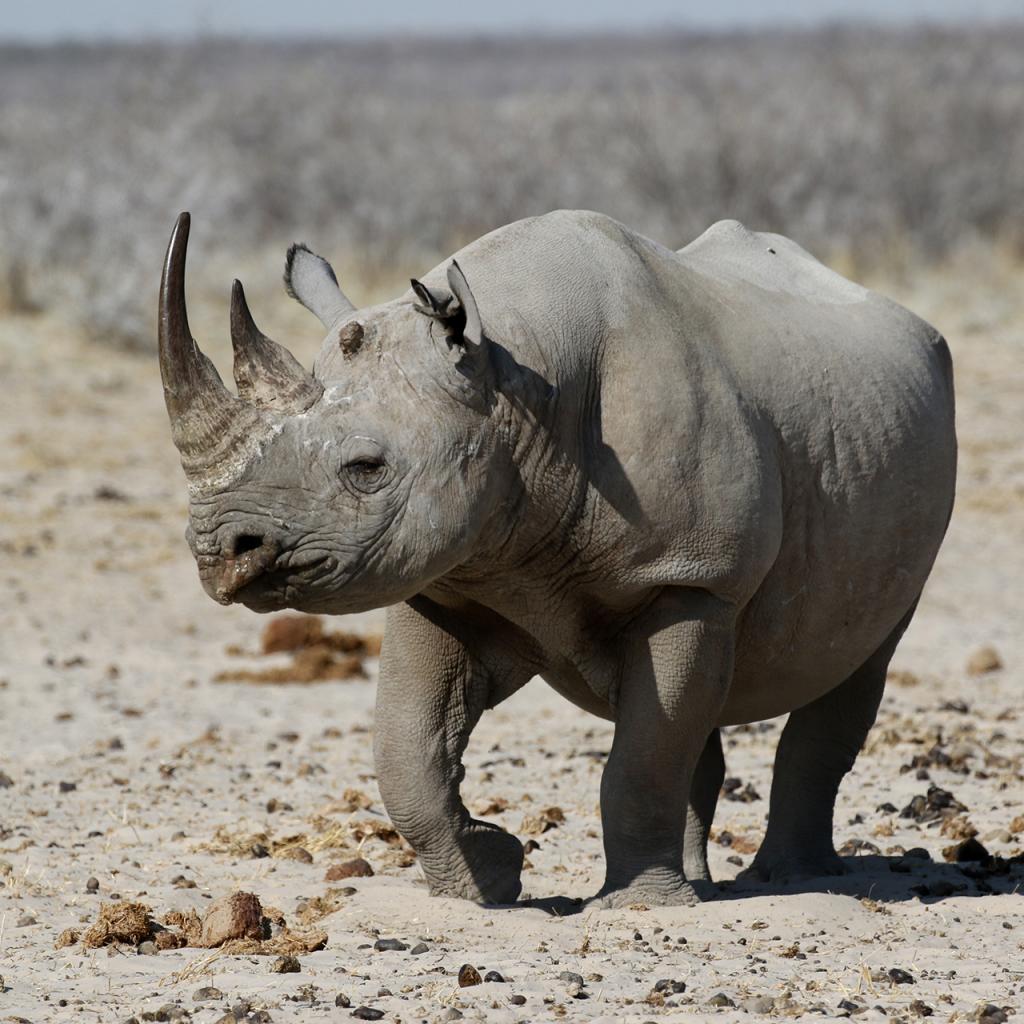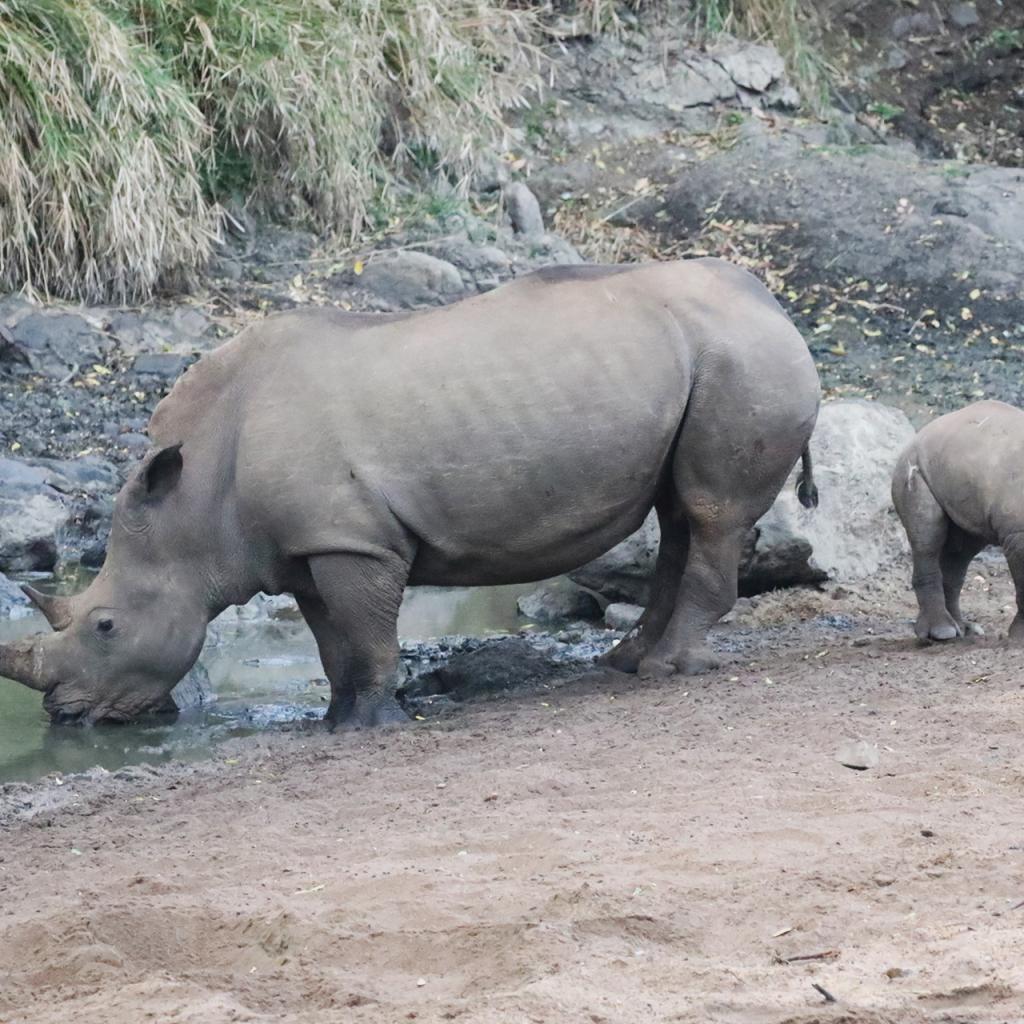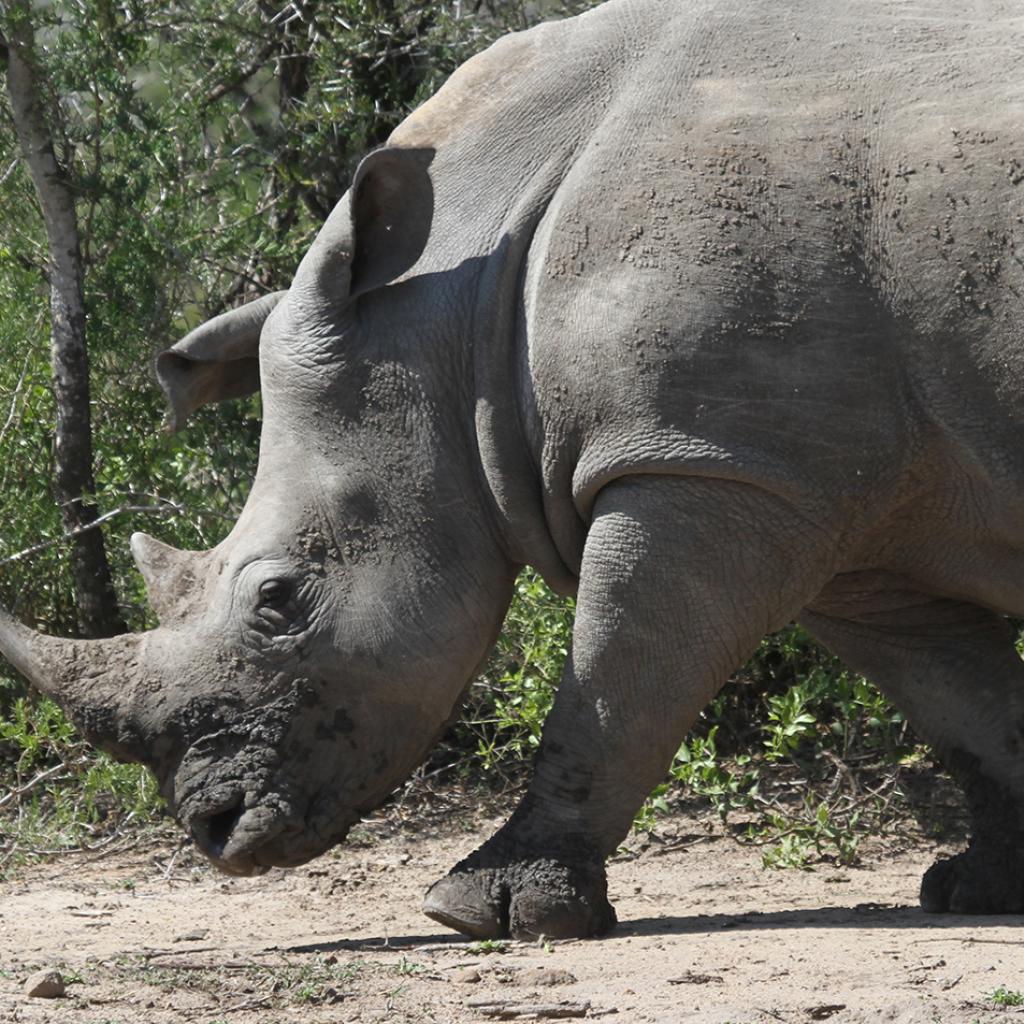
In reality, the rhinos are neither white nor black, the rhinos in Africa are all gray, unless they do a mud bath, but this is another matter.
So why are they called white rhino and black rhino?
The name of the white rhino actually derives from an error in the comprehension of the English word "wide", the pronunciation in Afrikaans was similar to "white" and this has misled; the reason why this species was identified with "wide" referred to the shape of the mouth of the animal that is wide and square.
Differently, the other African rhino was called by the English "black".
If the two species do not differ in their color, however, they have some very distinctive differences such as the silhouette, the habitat in which they live, preference and behavior related to food and much more.
To distinguish a rhino it is necessary to observe the physical differences of the animal or its behavior and the habitat in which it lives; in this article we will tell you about the physical differences.
The main difference lies in the shape of the mouth and this aspect is closely connected to the specific feeding of these two animals.
The white rhino has a mouth with very large, flat and squared lips, these are perfect for its feeding as it grazes the grass (grazer), the lips act like a lawnmower; white rhinos are also known by the name "square-lipped".
The black rhino feeds on the leaves and browsers of the bushes, therefore its pointed and hooked upper lip is perfectly designed to grasp and bite this plant material: the black rhino is also known as "hook-lipped".
But the differences between the two rhinos are many others, first of all the tonnage: the white is substantially larger than the black one; a female white rhino weighs about 1,700 kg and the male about 2,300 kg, while the weight of a black rhino ranges from 800 kg to 1,400 kg.
Another difference is represented by the shape of the body; the white rhino, besides being much longer, bigger and more cumbersome, has on its back a hump near the neck, while the black rhino is shorter and more compact and curved in correspondence of the back.
Another distinctive feature of the two rhinos are the ears.
The white rhino has very long tubular ears that are perfect for capturing and channeling noises, the ears can move independently, like small satellites also, when the rhino is at rest; the ears and the hearing are fundamental for the white rhino, that has a poor sight and the muzzle always turned to the ground to browse, the hearing helps it to perceive the dangers.
The black rhino instead has smaller ears and their shape is more rounded.
Finally, the length of the horn tends to differ between species.
The white rhino tends to have a longer front horn, while the second horn is usually much shorter.
The black rhino has an anterior horn slightly shorter than the white, but the second horn is longer; this means that its two horns are more similar in length.
This in general, then the actual length of the horns of these animals depends on various factors, not only by age, but also by the use they make of them; in fact they are often used to dig the ground or for other purposes, and this reduces its size, furthermore each specimen has characteristics that differ from the others.
Also the footprints of the two rhinos differ from each other, those of the white have the clover shape and have a sort of recess on the back; while the black rhino's footprints are wider and without the recess in the back.
White rhinos have smaller eyes than black rhinos, but this is a difficult feature to identify, better to focus on other aspects.
Do you like our comics? If you want to create your comic, your comic travel diary or a memory, click here and you will have a super offer dedicated to you!






